Carbon credits are generated from projects around the world that pull Greenhouse Gases (GHGs) out of the atmosphere or keep emissions from being released. Each time a project verifies they have reduced, avoided, or destroyed one metric tonne of GHG, one carbon credit is created. If you emit one tonne of GHG, and fund or purchase one tonne of emissions reduction, you have a net carbon footprint of zero.
A carbon offset project can be defined as any project, or set of deliberate activities that reduce the amount of greenhouse gas (mainly Carbon Dioxide) in the atmosphere. Offset projects must submit to at least three rounds of auditing by regulatory bodies, from methodology development, to specific project design, to monitoring of results. Only after an offset project has had its methodology and project design approved can it get monitored to earn credits. At regular intervals a third-party auditor will assess the project, monitor results and, depending on how many metric tonnes the project has reduced, that is how many credits the project is awarded.
Carbon offset projects get approved by reducing greenhouse gas emissions below a business-as-usual scenario. If a project can quantifiably and repeatedly produce less greenhouse gases than the current alternative, it will be eligible to earn Carbon Credits. For example, replacing a coal plant with a planned life of 30 years with a solar farm after year 5 would avoid 25 years of coal emissions. The difference is how many carbon credits the project would likely earn. Alternatively, taking land that is desertified and degraded, and planting millions of trees to bring it back to life and sequester carbon would pull more emissions out of the air than without planting millions of trees. Similarly, the difference between the baseline and new scenarios will determine how many credits should be awarded.
Following your order, we will send you a certificate verifying your purchase and detailing how many tons of GHG will be destroyed. CCC periodically groups purchases and retires the credits. Retiring a carbon credit means that when it is purchased it is taken off the market forever—never to be traded or swapped again. This way, only the purchaser of the carbon credit can ever claim to have reduced emissions. They cannot, for example, claim they have reduced emissions and then resell the credit. On a regular basis, CCC retires credits for clients and/or individual customers. Each credit has its own serial number, and can be tracked on a variety of different registries where projects and all of their individual credits are listed publicly.
The key is in the retirement process described above. Once a credit is retired, and listed as retired on a public carbon credit registry, a transaction record is generated on the site. However, credits that are associated with a purchase will have their serial numbers identified and then canceled out of existence. You will know your money has gone into the projects in the exact amount you have specified because you will have paid a certain amount for the credits. One can see if the same number of carbon credits were retired on your behalf. If the number of credits you purchase from CCC equals the number of credits retired on a registry, you will know the entirety of your purchase was completed.
There are a number of reputable carbon footprint calculators out there. The Environmental Protection Agency (EPA), and other Non-Governmental Organizations (NGOs) have the best. You can calculate home energy, emissions from car travel, events, and more. Be careful, however, as not all calculators are equal. Make sure you try at least two or three out before deciding you have arrived at a reasonable final number. For more advanced calculations, contact us! We offer carbon footprint calculation services of all types for businesses of all sizes. We are happy to walk you through the process step-by-step personally.
What does it cost to calculate the carbon footprint of my products or services?
The costs of our LCA services vary, however, we ensure that you will never pay the exorbitant cost of calculation charged by other firms like ours. We realize that very few companies have the internal bandwidth, nor the budget to pay $10,000’s for one product emissions report, and we further realize that if companies spend that much money on calculations, they won’t have anything left to take action. Therefore, we will waive the costs of calculation for clients and partners who agree to build carbon pricing into their goods and services and join the Carbon Neutral Checkout program. If companies pass the cost of offsets along to their customers, they can have calculations completed, then carbon offsets purchased for entire product lines.
What kinds of data do I need to launch a carbon neutral product?
This is up to you. We operate in the voluntary market, so we will accommodate you if you want to only calculate energy emissions. If you want to calculate emissions from processing, manufacture, trucking, raw materials, packaging, waste production, and the like, we can accommodate these requests as well. In order to claim full product carbon neutrality, we need to analyze information from raw materials, energy and fuel use in manufacture, processing, packaging, and intermediate transport. We are happy to help you compile this data if you don’t have it by reaching out to suppliers, or pulling emissions factors from our proprietary database.
CCC is GLOBAL and has access to projects and credits all around the world.
Carbon Neutral Checkout® helps you mitigate 100% of the greenhouse gas emissions associated with your products and services on every sale you make.
Share


Carbon Credit Capital, LLC
561 Broadway Suite 6A New York NY 10012
Monday – Friday 9:30 AM – 5:30 PM
© Carbon Credit Capital, LLC. 2024 All rights reserved.